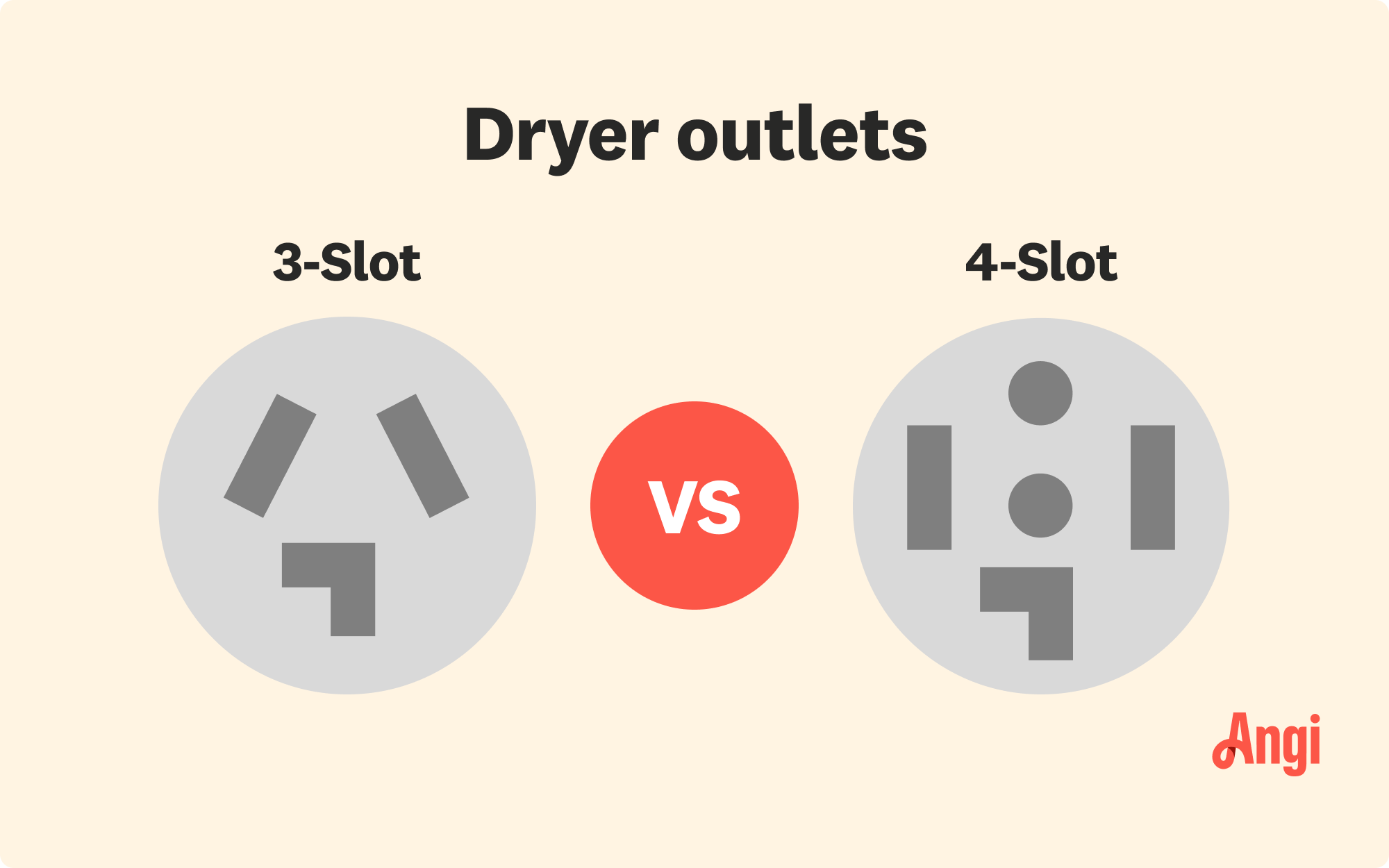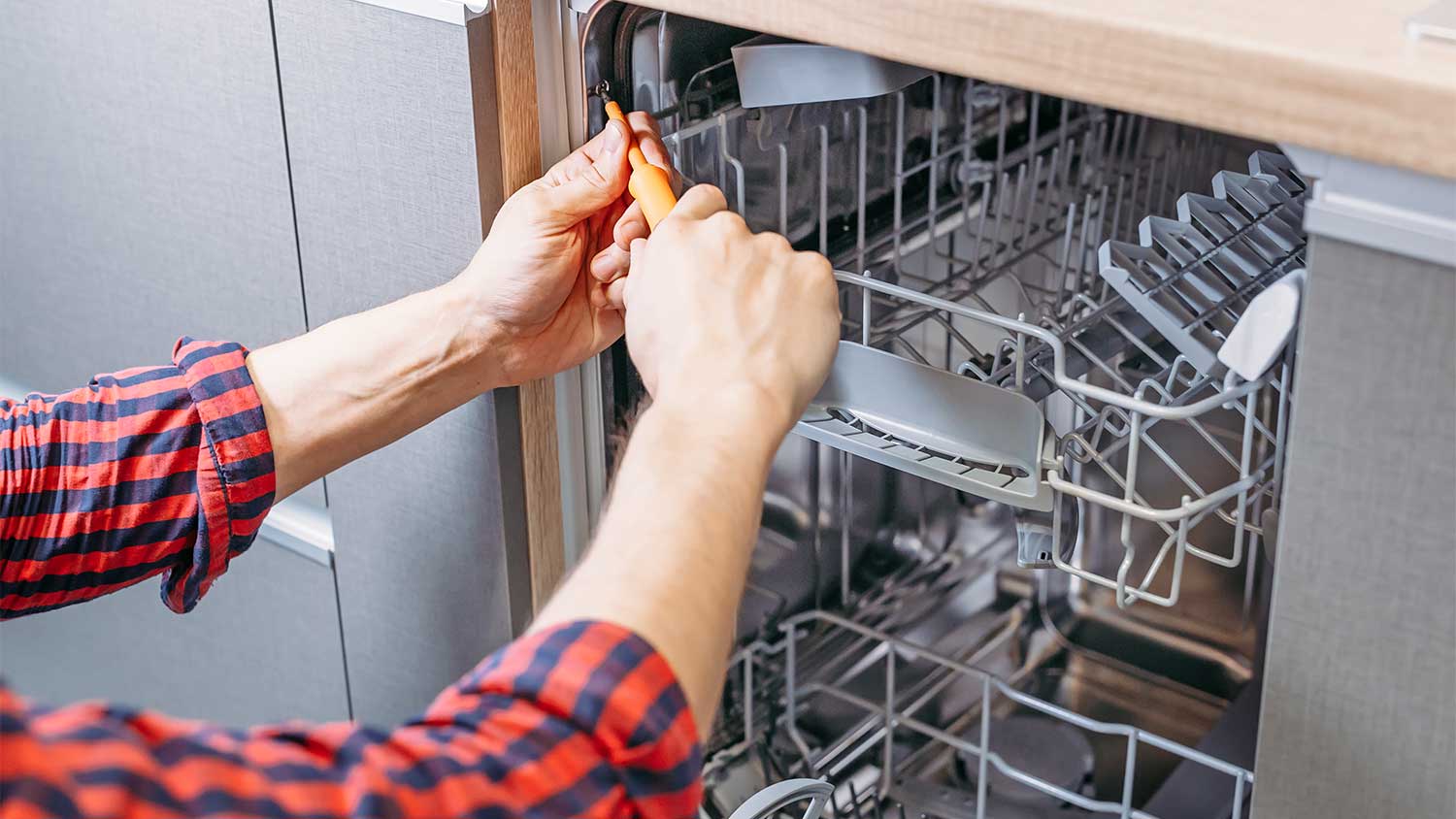
Microwave replacements are relatively affordable compared to other appliances. Use this guide to learn how much they cost based on factors like type and labor.
Plug in the possibilities


Powering up your dryer should be simple, whether you're moving into a new home or upgrading your appliance. But if you're unsure of the type of plug your home has for your dryer, you may be in for a challenge. Learn about the different types of dryer plugs and which one you should use in your home.

In addition to looking different, the primary difference between a 3-prong and 4-prong dryer plug is that the 3-prong is more common on older (and even outdated) appliances. You’ll likely not find any new dryers with a 3-prong plug, but if you live in an older home your outlets may still be built for them.
3-prong plug outlets pose potential safety concerns, so talk to a local electrician if you’re considering upgrading your dryer plug outlet.

A 3-prong dryer plug features two flat prongs and one round or U-shaped prong. The two flat prongs are for the hot wires, each providing 120 volts to supply the 240 volts needed for the dryer to run. The third prong is a ground prong to safely direct any stray electricity into the ground. In older installations, this prong often served a dual purpose, acting as both the ground and neutral wire.
Three-prong dryer plugs were the standard until the late 1990s when the National Electrical Code (NEC) was updated to require 4-prong plugs for new installations. This change aimed to improve safety by providing a separate path for the ground and neutral wires. Many older homes still have 3-prong dryer outlets. Adapters or rewiring would be necessary if you want to install new dryers with 4-prong cords in this type of house.
| Pros | Cons |
|---|---|
| Compatible with older homes | Outdated |
| Replacing costs less than rewiring | Safety concerns |
| Simple installation and troubleshooting | Requires rewiring if you want to update to 4-prong |
Best for: Homes built before the late 1990s that have existing 3-prong dryer outlets.

Four-prong dryer plugs are the modern standard for electric dryer connections. They include two hot wires, one neutral wire, and one ground wire. Similar to the 3-prong, the two hot wires each supply 120 volts to provide 240 volts for the dryer's operation. The separate neutral and ground wires improve safety by ensuring that any stray electrical current is safely directed away from the appliance.
For the sake of safety, the 4-prong setup is mandatory for all new dryer installations. Keeping the ground wire away from the neutral wire reduces the risk of electrical shock or fire.
| Pros | Cons |
|---|---|
| Increased safety | Incompatible with older homes |
| Complies with modern standards | Pricey to upgrade |
| Better electrical performance | Potential adaption issues |
Best for: Homes constructed or renovated after the 1990s.
The age of your home and its electrical system are the two most important aspects when choosing between a 3-prong and a 4-prong dryer plug. Three-prong outlets are common for homes built before the late 1990s and using this plug is more straightforward and cost-effective. Otherwise, it requires extensive rewiring. However, 3-prong plugs have safety concerns due to the combined ground and neutral wire.
In homes built or renovated in the 1990s or later, 4-prong dryer plugs are required because they’re safer. For homes undergoing renovations or when installing a new dryer, upgrading to a 4-prong outlet is a great idea.
Choosing between 3-prong or 4-prong dryer plugs is mainly relevant for electric dryers, as their power requirements are higher than those of gas dryers. Gas dryers primarily use natural gas or propane for heating and only require electricity to power the drum, controls, and other components.
These types of dyers use a standard 120-volt outlet with a simple 3-prong plug, not the specialized 240-volt plugs used for electric dryers. For gas dryers, ensuring the correct connection to a standard grounded outlet is sufficient, making the decision between 3-prong and 4-prong plugs unnecessary. However, you can convert a gas dryer to electric, which will require rewiring.
Converting the dryer cord or outlet to a 4-prong setup reduces the risk of electrical shocks and fires. A 4-prong system also keeps you compliant with modern electrical codes, which is crucial for passing inspections, maintaining insurance coverage, and potentially increasing the home's value.
If you're living in an older home with a 3-prong dryer outlet and have safety concerns, you have a few choices.
One conversion method is to replace the existing 3-prong plug cord with a 4-prong plug cord. This method is simple enough for an intermediate DIY homeowner to handle. The primary safety concern is ensuring the neutral and ground wires are properly separated.
To convert a dryer cord from a 3-prong to a 4-prong, you would remove the existing cord, and connect the two hot wires and the neutral wire to their respective terminals. Then, attach the ground wire to the ground terminal, ensuring proper disconnection or modification of any internal grounding strap.
The other option for homeowners is converting the 3-prong outlet to a 4-prong one. To do this, the outlet would be rewired to handle a 4-prong dryer plug. However, this process requires extensive electrical experience. Your best bet is to hire a local electrician or a dryer repair technician near you to do the work.
From average costs to expert advice, get all the answers you need to get your job done.

Microwave replacements are relatively affordable compared to other appliances. Use this guide to learn how much they cost based on factors like type and labor.

Get expert insights on dishwasher repair cost, including average prices, key cost factors, and tips to save money on repairs.

Get transparent refrigerator repair cost info. Learn what impacts price, compare repair vs. replacement, and find ways to save on your fridge repair.

Learning how to remove an oven door makes it easier to clean or repair it. Follow these steps to remove your oven door without damaging it.

Dealing with a clogged dishwasher? Use this guide on how to drain a dishwasher to empty it and clear out any debris that’s causing a backup.

Wondering who to call to hook up a gas dryer? Call a licensed plumber or contractor to hook up your gas dryer and make sure it's venting properly.